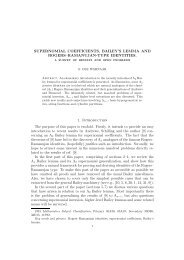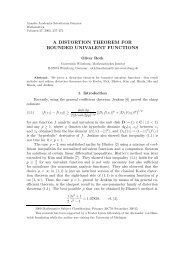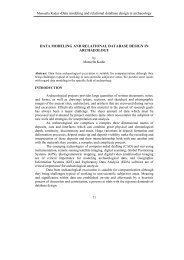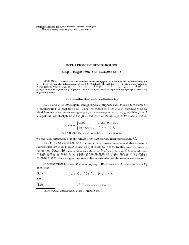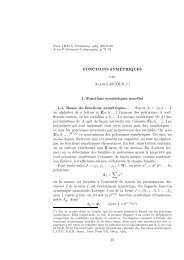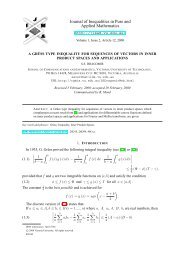CHAPTER 6 TWO-COLORED WALLPAPER PATTERNS 6.0 ...
CHAPTER 6 TWO-COLORED WALLPAPER PATTERNS 6.0 ...
CHAPTER 6 TWO-COLORED WALLPAPER PATTERNS 6.0 ...
Create successful ePaper yourself
Turn your PDF publications into a flip-book with our unique Google optimized e-Paper software.
described in this section. Indeed if we view a cm two-colored<br />
pattern as a ‘merge’ of a pm pattern (reflections) and a pg pattern<br />
(glide reflections), we see that there are only two possibilities for<br />
each ‘partner’: only pm, pm′ for pm (6.4.4 rules out p b<br />
′ 1m and c′ m ,<br />
while 6.4.3 rules out p′m and p b<br />
′ g ) and only pg, pg′ for pg (p b<br />
′ 1g is<br />
ruled out by 6.4.4). But two × two = four, and we can certainly write<br />
down the new (cm) types as ‘products’ of the old ones (pm, pg):<br />
cm = pm × pg, cm′ = pm′ × pg′ , p c<br />
′ g = pm′ × pg, p c<br />
′ m = pm × pg′<br />
Of course this ‘multiplication’ was first introduced in section<br />
5.7, where we viewed pmm2s as ‘products’ of pm11s and p1m1s.<br />
6.4.6 Further examples and symmetry plans.<br />
Fig. 6.37<br />
cm′ p c<br />
′ g p c<br />
′ m<br />
cm<br />
cm′



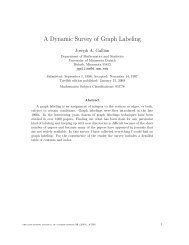


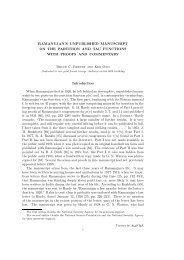
![(.,t ] and [s, .) , where [s,t ] = {s' GT; s ¤ s' ¤ t} , (.,t ] = {s' GT; s' ¤ t} and ...](https://img.yumpu.com/43303393/1/184x260/t-and-s-where-st-s-gt-s-a-s-a-t-t-s-gt-s-a-t-and-.jpg?quality=85)
